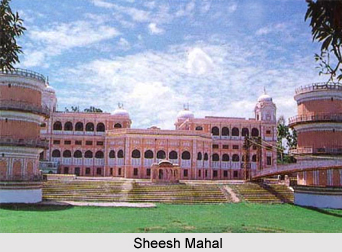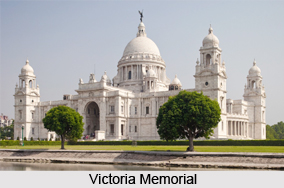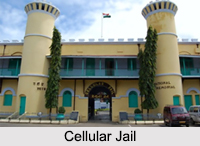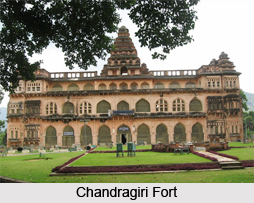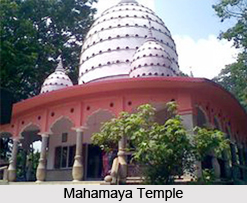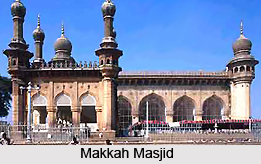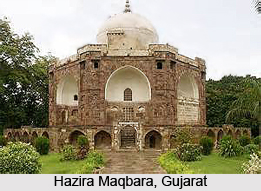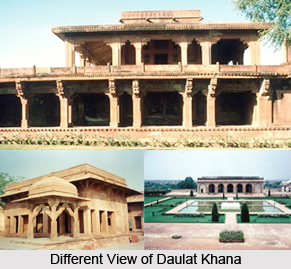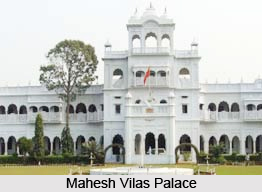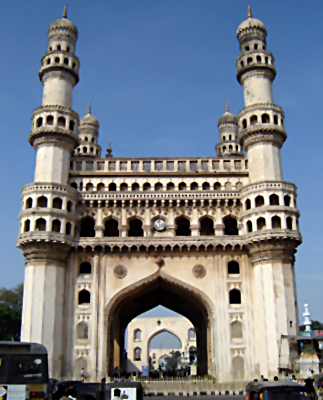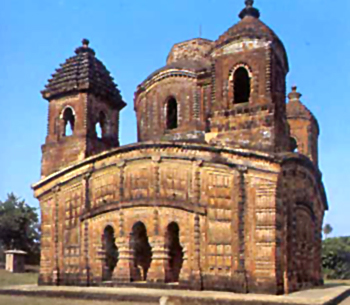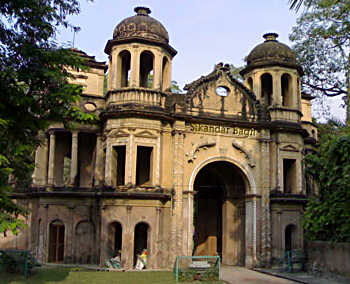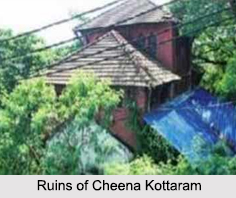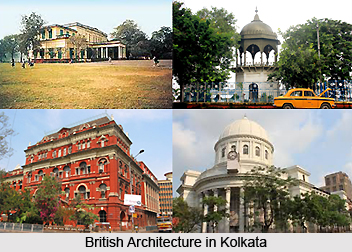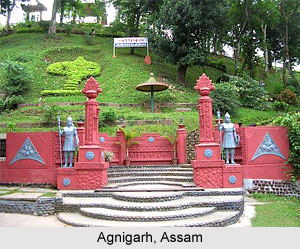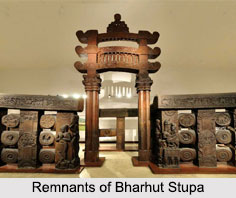![]() Ambika is the Yaksi of the twenty second Jina Lord Neminath. She is deeply revered and is a well known goddess in both the sects of Jainism. She was the first Yaksi to appear along with Sarvanubhati. During the beginning of the transition period i.e. between the sixth and the eighth century A.D. of the Gupta period to the Middle Ages Ambika and Yaksesvara together appeared as the Yakshas and Yakshani pair. Ambika has been given much importance at Khajuraho Temples. Eleven independent sculptures of Ambika can be seen at the site. She is seen with a bunch of mangoes, a child in her two arms and a lion as her mount.
Ambika is the Yaksi of the twenty second Jina Lord Neminath. She is deeply revered and is a well known goddess in both the sects of Jainism. She was the first Yaksi to appear along with Sarvanubhati. During the beginning of the transition period i.e. between the sixth and the eighth century A.D. of the Gupta period to the Middle Ages Ambika and Yaksesvara together appeared as the Yakshas and Yakshani pair. Ambika has been given much importance at Khajuraho Temples. Eleven independent sculptures of Ambika can be seen at the site. She is seen with a bunch of mangoes, a child in her two arms and a lion as her mount.
The Parshvanatha Temple of 950-70 A.D. houses two Ambika figures on its south facade. She is seen with two hands standing on a bracket holding a bunch of mangoes in her right arm while with the left she holds a child clinging to her breast. The descriptions about these attributes of Ambika have been mentioned in the two Digambara texts, namely, the Pratisthnsnraddhnra and the Pratisihntilakam. Behind the head are shown bunches of mangoes. The other child of Ambika, standing by her right, shows a fruit in one arm. Another beautiful figure of Ambika with four arms can be seen carved in a niche above the cornice. She is seen sitting in lalitamudra on a padmasana posture with lotus stems below. Her vehicle, lion is depicted on the left side. She bears lotuses in her upper right and left hands, while with the lower hands she holds a bunch of mangoes. A child is seated on her left lap. The child is seen touching her left breast. Above the head of Ambika there appears a miniature figure of her Jina, Neminatha, seated in a cross-legged posture. On each side of her head foliages of some tree is visible. Behind the head is a round halo consisting of blossom circlet.
The Adinatha temple has three figures of Ambika. Two of them are carved on its outer walls and one on the left end of the door lintel. The figure on the western side is four armed. Here she is seen sitting on a pedestal in lalitnsana. Beneath the left foot of Ambika a lion figure is visible. She holds a long stalked rolled up lotus in her upper right arm and a manuscript cum lotus in the left hand. On her lower right arm she holds a bunch of mangoes and with her lower left she supports a child that is seated on her lap.
The second four armed sculpture of Ambika is visible in the pillared niche of the cornice on east. Here she stands on a pedestal and wears long garland. In her two hands she holds long stalked rolled up lotuses and in the lower right hand she holds a bunch of mangoes. Her lower left arm is placed over the head of a standing child. Here instead of sitting on the lap the child is seen standing by her left side. On the right side of the idol a lion that is her vehicle can be seen. Above the head of Ambika are carved a seated Jina figure and the branches of mango tree.
The third figure of Ambika is also four armed and is seen seated in lalitasana. It has been carved on the left end of the door lintel. She holds a long stalked rolled up lotus in her right upper arm and a manuscript cum lotus in the left upper hand. In her lower right hand she is carrying a bunch of mangoes and with the lower left she holds a child that is seated on lap. The image of her vehicle, lion is seen on right side.
Thus, the four-armed figures of Ambika on the walls of the two Jaina temples depict her either holding lotuses or a lotus and a manuscript cum lotus in two upper arms. As per the Digambara tradition Ambika cannot be seen bearing a noose and a goad in upper pair of hands. It is only in the Swetambara tradition that she is seen in such a form.
